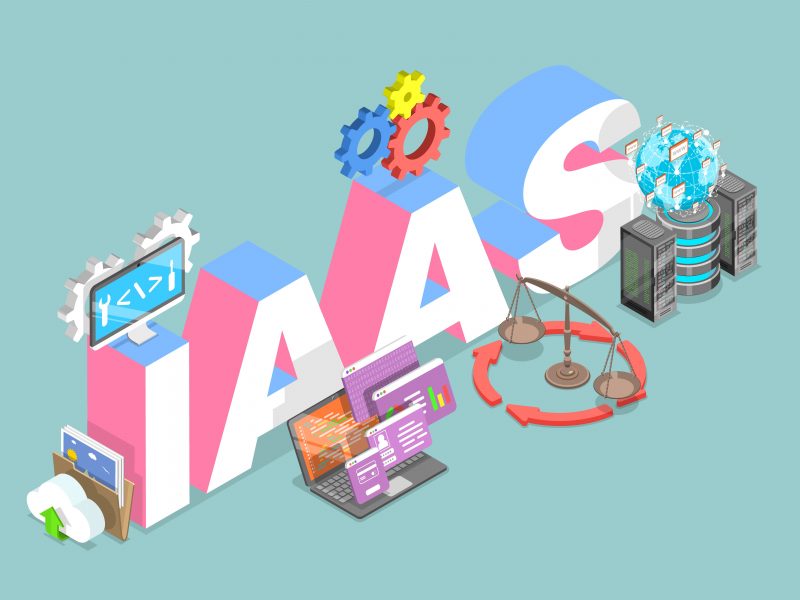In today’s fast-paced digital world, businesses constantly seek ways to gain a competitive edge. One key aspect that can make all the difference is harnessing the power of real-time analytics. By analyzing real-time data, companies can make more informed decisions, identify trends and patterns, and respond quickly to changing market dynamics.
However, traditional approaches to data analysis often fall short of delivering timely insights. This is where data virtualization comes into play. By consolidating and integrating data from various sources in real time, data virtualization enables organizations to access a unified view of their information landscape without physically moving or replicating it.
What is Data Virtualization?
Data virtualization is a cutting-edge technology that enables organizations to access and integrate data from multiple sources in real time without physically moving or replicating it. It provides a unified view of the organization’s data landscape, making it easier to analyze and derive valuable insights.
At its core, data virtualization acts as a middle layer between the various data sources and the end-users. It allows users to query and analyze data from different systems seamlessly, regardless of their location or format. This means that instead of spending time extracting and transforming data into a single repository, users can directly access information in real time.
Data virtualization involves creating logical views or representations of disparate data sources. These views are then exposed to users as if they were accessing a single database. Behind the scenes, complex algorithms handle queries and retrieve relevant information from the actual underlying databases.
One key advantage of data virtualization is its ability to provide up-to-date insights by eliminating latency caused by traditional batch processing methods. Real-time analytics becomes possible because changes in any source system are immediately reflected in the virtualized view.
Definition and Overview
In today’s fast-paced digital landscape, organizations generate vast amounts of data from various sources. To effectively harness this data for actionable insights, businesses need a way to access and analyze it in real-time. This is where data virtualization comes into play.
Data virtualization is a technology that allows organizations to retrieve and manipulate data from disparate sources without physically consolidating or replicating it into a centralized repository. It provides a unified data view by abstracting the underlying complexities of different systems, formats, and locations.
Data virtualisation enables seamless integration across multiple platforms by creating a logical layer between applications and underlying databases. This means that users can access information from different sources as if they were all part of one database, regardless of whether the data resides in on-premises systems, cloud-based services, or external partners’ databases.
With its ability to integrate diverse datasets on the fly and provide real-time access to information across the enterprise, data virtualization empowers organizations with faster decision-making capabilities. It eliminates the need for time-consuming ETL (Extract-Transform-Load) processes or manual consolidation efforts.
How Data Virtualization Works
Data virtualization is a powerful technology that allows businesses to access and integrate data from various sources in real-time without physical data movement or replication. But how does data virtualization work?
At its core, data virtualization creates a logical layer between the disparate data sources and the end-users or applications needing data access. This logical layer acts as a single entry point, providing a unified view of all the connected data sources.
When a query or request for information is made, the data virtualization software intercepts it and determines which underlying systems contain relevant data. It then fetches only the necessary subsets of information from those systems in real-time, on the fly. This process eliminates resource-intensive operations like ETL (Extract-Transform-Load) and minimizes latency.
Benefits and Limitations of Data Virtualization
Data virtualization is a powerful tool that can revolutionize how organizations approach real-time analytics. Providing a unified view of data from multiple sources enables businesses to make faster and more informed decisions. However, like any technology, data virtualization has its benefits and limitations that should be considered.
One of the significant benefits of data virtualization is its ability to improve agility and flexibility in accessing data. With traditional methods, accessing data from different sources often requires time-consuming integration efforts. Data virtualization eliminates this need by providing a single access point for all relevant data, regardless of where it is stored or how it is structured.
Another advantage is cost savings. Data virtualization eliminates costly physical infrastructure upgrades or additional storage solutions. It allows organizations to leverage existing resources while still gaining access to real-time insights.
Data security and governance are also improved through data virtualization. With centralized control over data access and usage policies, organizations can ensure compliance with regulations such as GDPR or HIPAA. This helps protect sensitive information while enabling authorized users to access the necessary insights.
Advantages of Real-Time Analytics
Real-time analytics has become increasingly important in today’s fast-paced business environment. Organizations need to make informed decisions quickly, and data virtualization is crucial in enabling real-time analytics. Here are some key advantages of using data virtualization for real-time analytics:
1. Faster access to data: With data virtualization, organizations can access and integrate data from multiple sources in real-time. This means that analysts can have up-to-date information at their fingertips, allowing them to make timely decisions based on the most current data available.
2. Improved decision-making: Real-time analytics powered by data virtualization allows organizations to instantly gain insights into customer behaviour, market trends, and operational efficiency. This enables businesses to identify patterns or anomalies as they occur and take proactive steps to optimize performance or address issues promptly.
3. Cost savings: Data virtualization eliminates the need for costly ETL (extract, transform, load) processes by providing a unified view of disparate datasets without physically moving or duplicating the underlying information. Organizations can achieve significant cost savings by reducing storage requirements and minimizing infrastructure costs associated with traditional integration methods.
4. Agility and flexibility: Data virtualization provides a flexible framework that enables organizations to quickly adapt and respond to changing business needs. It allows users across different departments or teams to access relevant information easily without disrupting existing systems or requiring extensive IT involvement.
5. Enhanced collaboration: Real-time analytics facilitated by data virtualization encourages collaboration among various organisational stakeholders by providing a real-time platform for accessing and analyzing shared datasets. This promotes cross-functional teamwork as individuals from different departments can collaborate on projects more effectively.
Limitations and Challenges to Consider
While data virtualization offers a range of benefits for real-time analytics, it is essential also to consider its limitations and challenges. Understanding these can help organizations make informed decisions about implementing data virtualization solutions.
One limitation is the potential impact on performance. Data virtualization involves accessing data from multiple sources in real time, which can strain network bandwidth and system resources. Organizations must ensure their infrastructure can handle the increased workload and optimize performance accordingly.
Popular Data Virtualization Tools
Data virtualization has gained popularity in recent years as organizations strive to harness the power of Digital analytics. Choosing the right tools that align with your business needs is important to implement data virtualisation effectively. Here are some popular data virtualization tools that can help you unleash the full potential of your data.
1. Denodo: Denodo is a widely recognized leader in data virtualization technology. It offers a comprehensive platform that enables businesses to integrate and deliver real-time data from various sources, such as databases, cloud applications, and big data platforms. Denodo’s intuitive interface and robust performance make it a top choice for many enterprises.
2. TIBCO Data Virtualization: TIBCO provides an advanced data virtualization solution that allows organizations to create a logical view of their disparate data sources without physically moving or replicating the data. With its powerful querying capabilities and intelligent caching mechanisms, TIBCO Data Virtualization ensures fast access to real-time insights.
3. Informatica Enterprise Data Catalog (EDC): Informatica EDC is designed for effective metadata management in complex enterprise environments. It enables users to discover, understand, and govern all their relevant datasets across various systems through automated scanning and cataloguing processes.
4. Cisco Information Server: Cisco Information Server enables seamless integration of diverse datasets into a unified view for analysis purposes by leveraging its powerful transformation capabilities and extensive connectivity options.
5. Oracle Data Integrator (ODI): ODI is an enterprise-level tool used for extracting, transforming, and loading (ETL) operations, along with providing support for integrating different types of databases seamlessly within one system.
Getting Started with Data Virtualization
If you’re ready to harness the power of data virtualization for your organization, here are some critical steps to get started.
1. Define Your Objectives: Before diving into data virtualization, clearly define your objectives. What specific business problems are you trying to solve? What insights do you hope to gain from real-time analytics? By clearly understanding your goals, you can better align your data virtualization strategy and ensure its success.
2. Assess Your Current Infrastructure: Inventory your IT infrastructure and identify gaps or limitations impacting data virtualisation implementation. Evaluate the compatibility of your systems and databases and the availability and quality of your data sources. This assessment will help you determine necessary adjustments or upgrades before moving forward.
3. Choose the Right Tool: Several popular data virtualization tools are available today. When selecting an agency, consider scalability, security features, ease of use, and integration capabilities with other technologies in your stack. Choosing a tool that aligns with your organization’s budget and long-term goals is also crucial.
4. Design Your Virtualized Environment: Once you have chosen a data virtualization tool, it’s time to design your virtualized environment. This involves mapping out how different data sources will be integrated and accessed through the virtual layer. You’ll need to define mappings between source systems and target objects, establish security protocols for accessing sensitive information, and set up monitoring mechanisms for performance optimization.
5. Start Small but Think Big: As with any new technology implementation, it’s advisable to start small by initially focusing on one or two use cases rather than attempting a full-scale deployment immediately. This allows for easier troubleshooting and fine-tuning before gradually expanding across the organisation.
Key Best Practices for Implementation
Implementing data virtualization can be a game-changer for your organization, but it’s important to approach it with careful planning and execution. To help you make the most of this powerful technology, here are some key best practices to consider:
1. Define clear goals: Before diving into data virtualization, clearly define your objectives and what you hope to achieve. Whether improving real-time analytics or streamlining data integration, having well-defined goals will guide your implementation strategy.
2. Assess your infrastructure: Evaluate your existing IT infrastructure to ensure it can support data virtualization effectively. Consider factors such as network capacity, security requirements, and scalability needs. This assessment will help identify any potential roadblocks or areas that need improvement before implementation.
3. Start small and iterate: It’s often best to start with a pilot project or proof-of-concept rather than trying to simultaneously implement data virtualization across the entire organization. You can minimise risks and optimise results by creating small and iterating based on feedback and lessons learned.
4. Involve stakeholders early on: Engage key stakeholders from various departments in the planning process right from the beginning. This collaboration ensures that their requirements are considered during implementation, leading to better adoption and alignment with business needs.
5. Monitor performance metrics: Establish baseline performance metrics before implementing data virtualization so that you can measure its impact accurately over time. Continuously monitor these metrics post-implementation to identify any bottlenecks or areas for optimization.
The Future of Data Virtualization
As technology advances rapidly, the future of data virtualization looks promising. With organizations increasingly relying on real-time analytics to drive decision-making, data virtualization is poised to play a crucial role in unlocking the power of this valuable resource.
One key area where data virtualization will make significant strides is enhancing scalability and agility. As businesses continue to generate massive amounts of data, traditional methods of integration and storage can become cumbersome and time-consuming. However, with data virtualization, organizations can easily access and integrate multiple data sources in real-time, allowing faster analysis and decision-making.
Conclusion
Data virtualization empowers real-time analytics by integrating data from multiple sources, enhancing decision-making speed and quality. This article explores its concept, benefits (agility, faster insights), and challenges. It also outlines popular tools and essential implementation practices. The future of data virtualization is promising, given the growing need for real-time insights from diverse data sources.


